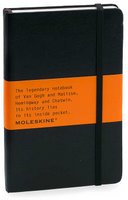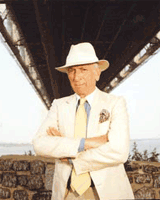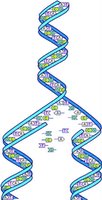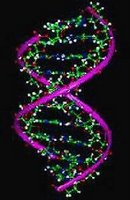
This just in: Judge Rules People Don't Own Their Tissues (again). In
my last post, I described
my story in this week's New York Times Magazine about tissue ownership and promised an update, so here it is: [Please note: Before reading further, you should read
my article, otherwise this post won't make much sense, because it follows up on the story's final section and assumes readers of this post have read the entire story.]
In the story, among other things, I wrote about the potentially landmark court case between Washington University and Dr. William Catalona, which questioned whether patients can control the use of their tissues in research, and whether they retain any property rights in their excised body parts. (The case where Washington University claimed ownership of 6,000 tissue samples from patients who asked that their samples be removed from the university's prostate cancer bank, which is worth millions of dollars). After more than a year of deliberating, the judge finally ruled on Friday (4/14/06), which was interesting timing for me, since my article had already gone to press for publication the next day. It was too late to include his ruling in my story, where I would have covered it in detail and given experts the chance to comment on it. Since I couldn't do that, please pardon the long post while I'll give some details here as a follow-up:
Judge Stephen Limbaugh ruled in favor of Washington University on all counts saying, "Washington University owns all biological materials, including but not limited to blood, tissue, and DNA samples, in the GU Repository." (The GU Repository stands for Genito-Urinary Repository, otherwise known as the prostate collection.) "Neither Dr. William Catalona nor any research participant," he wrote, "... has any ownership or proprietary interest in the biological samples."
In the end, when it came to property rights, the judge didn't do anything new: He simply went along with the Moore and Greenberg rulings (explained in my story), which said, "the property right in blood and tissue samples ... evaporates once the sample is voluntarily given to a third party," regardless of whether you've been informed about what your tissue will be used for. So nothing changes there: You don't own or control your tissues once they're removed from your body, unless you (like
Ted Slavin) negotiate terms on the front end.
At points, the Catalona ruling is a bit circular: The judge said that having possession of something can establish ownership, and since Washington University had possession of these tissues samples (though patients asked for them to be transferred elsewhere and W.U. refused), they were acting as owners, and therefore they own it. Which is what the patients were disputing in the first place. The patients argued several other points, including that they didn't want their tissues and DNA distributed to scientists for research they didn't consent to. But the judge discounted all patient testimony saying, "these gentlemen all had a deep personal connection to Dr. Catalona, and believed that they owed their lives to him. " Because of this, he called their testimony "suspect."
The judge pointed to several ambiguities in the case: The consent forms didn't say whether patients gave their tissues to Catalona exclusively. They did said patients could withdraw from the research at any time, but didn't say what that meant regarding tissues. The judge wrote, "There is nothing stated in the governing federal regulations which equates a right to discontinue participation with a right to control the disposition and use of the excised biological materials." Contract law says that in the case of ambiguities in written agreements (like consent forms), the ambiguity goes against the writer of the contract -- if you don't specify it in the form, you don't get it. But that's not how this judge ruled. Instead, he said, "The Court finds that the right to discontinue participation in a research project means nothing more than that the [research participant] has chosen not to provide any more biological materials ... Nothing more can or should be read into this right." In other words, you can't ask scientists to stop doing research on your tissue. This ruling could have a far-reaching impact, since it's the first to define the federal right to withdraw in terms of tissue research. (See story for details).
In the end, the judge surprisingly discounted all arguments regarding the consent forms, calling these tissues a "gift," and saying -- in a disturbing statement -- that "the existence of the informed consent forms is inconsequential." He didn't mention one important thing: The law says if there is consent in writing, you must honor it, which means those forms aren't "inconsequential" at all.
In a statement that parrots the Moore ruling, this judge said, "Medical research can only advance if access to these materials to the scientific community is not thwarted by private agendas. If left unregulated and to the whims of a [research participant], these highly-prized biological materials would become nothing more than chattel going to the highest bidder. It would no longer be a question of the importance of the research protocol to public health, but rather who can pay the most." This is ironic, given that many experts argue (and several studies have supported this) that access to these materials is already being "thwarted by private agendas" in an area of science where materials are no longer shared freely because of a focus on proprietary information and profits instead of public health. People have been arguing for years that profits and competition in science have created precisely the situation this judge says he hopes to prevent. The one thing he's done is cut patients off from having a say in this -- these patients weren't after profits of any kind. They wanted their tissues used for the research they intended it for -- the university was the party raising the issue of profits.
I'm very interested to see what happens from here -- many interesting debates will follow, and an appeal. This case isn't over, so the saga continues ...
I'll be live on the air discussing my story and the Catalona ruling tomorrow on NPR affiliate KPCC in Los Angeles from 11:00 to 11:40 (west coast time). So tune in.
Labels: Bioethics: Use of Human Tissues, My Book, Publication Updates, Science and Money
 About a week ago, I launched Critical Mass, the blog of the National Book Critics Circle, where I'm on the board of directors. It's been a serious labor of love, so I'm excited to see it alive and thriving (we're already getting thousands of hits a day). I'll be posting at Critical Mass with a team of other bloggers, all fellow NBCC board members -- we're all professional writers, critics and book review editors, and judges of the yearly NBCC awards. Critical Mass will feature publishing and criticism news and commentary, noteworthy book reviews, tips, useful products, and anything else that catches our attention.
About a week ago, I launched Critical Mass, the blog of the National Book Critics Circle, where I'm on the board of directors. It's been a serious labor of love, so I'm excited to see it alive and thriving (we're already getting thousands of hits a day). I'll be posting at Critical Mass with a team of other bloggers, all fellow NBCC board members -- we're all professional writers, critics and book review editors, and judges of the yearly NBCC awards. Critical Mass will feature publishing and criticism news and commentary, noteworthy book reviews, tips, useful products, and anything else that catches our attention.












